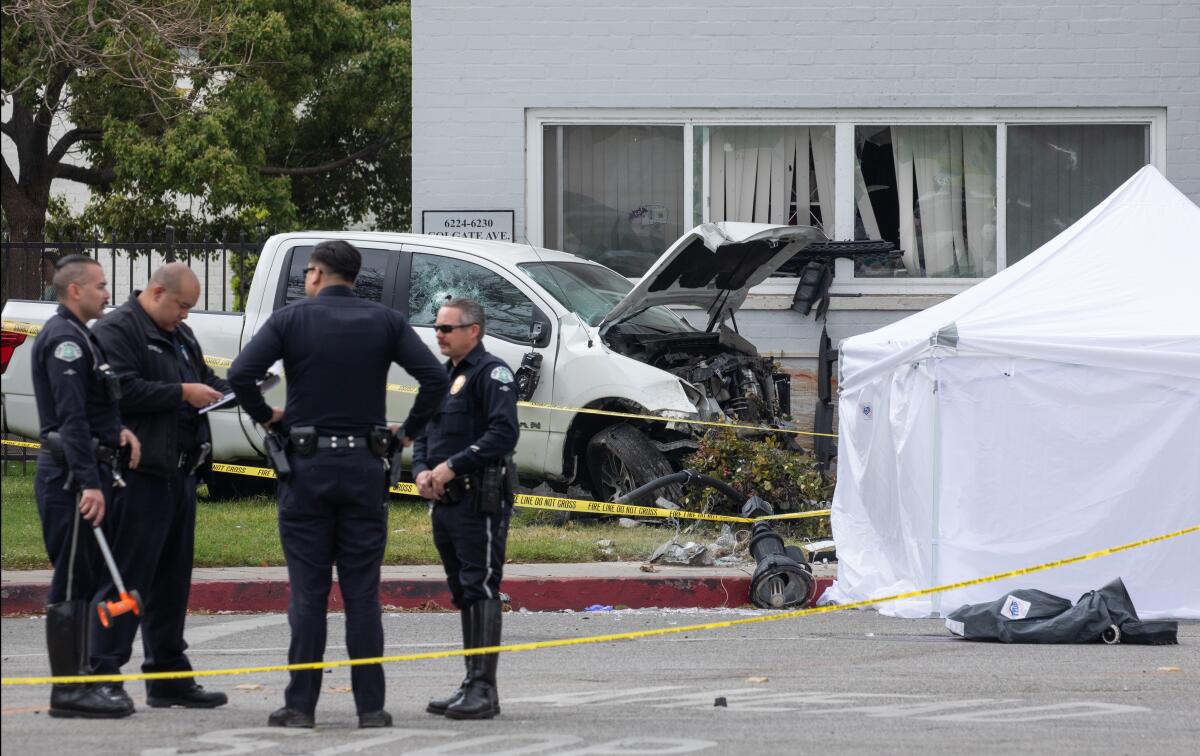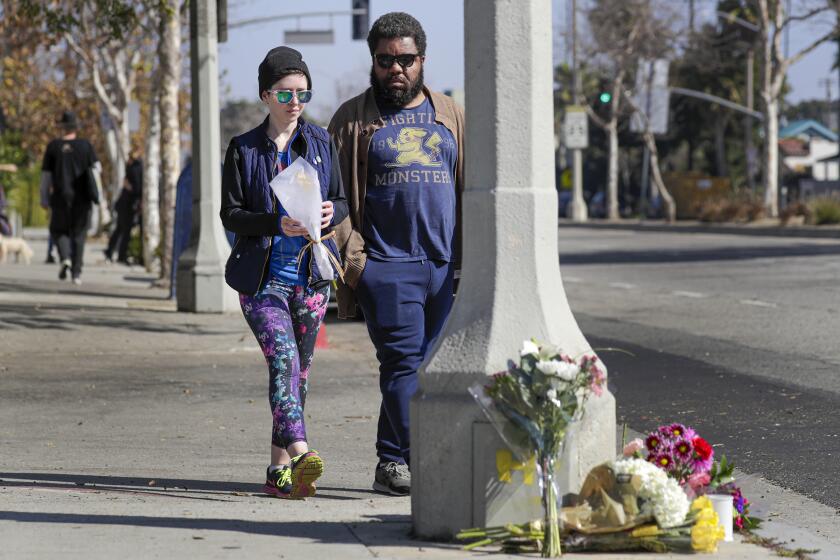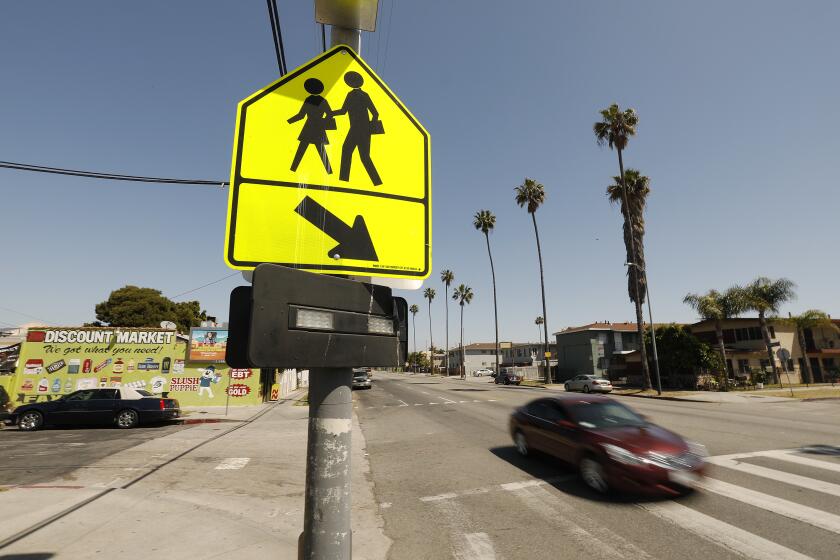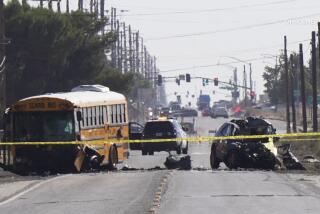Editorial: Walking to school should not be deadly

- Share via
On Tuesday morning, what should have been a perfectly routine, pleasant stroll by mother and child to Hancock Park Elementary School became a tragedy for the entire community.
A pickup truck plowed into the pair in a crosswalk next to the school before it crashed into an apartment building. The mother died at the scene and her daughter was critically injured. Police initially said the driver may have been impaired and speeding. On Wednesday, police said the driver may have had a medical emergency.
This is an all-too-common horror in Los Angeles. The mother was the 48th pedestrian killed by a vehicle this year; the city is on pace to repeat last year’s spike in pedestrian fatalities, which at 159 was the highest number of lives lost in 20 years, according to the advocacy group Streets Are For Everyone.
The entire transportation system, from road engineering to vehicle design, needs to be planned to avoid crashes and to reduce serious injury and death when crashes occur.
It’s too easy to chalk up the fatalities to circumstance and individual decisions. After all, you might ask, what possibly can be done to stop a speeding driver under the influence of drugs or alcohol, or who loses control of the vehicle? A lot, actually. Roads can be designed to reduce the likelihood of a collision and to force drivers to slow down enough to avoid causing serious injury and death if they crash.
In fact, Hancock Park Elementary School has been slated for a crosswalk safety project at the crash site for more than a year. The Mid City West Neighborhood Council budgeted money for a painted curb extension, which would narrow the street and shorten the time pedestrians are exposed to cars. But the city’s Department of Transportation hasn’t installed the extension yet because the agency is short-staffed. It’s impossible to say whether the project would have prevented this collision, but it’s clear that families and school officials knew the streets around campus were dangerous and had been clamoring for traffic-calming measures.
Hancock Park Elementary is not unique in tragedy. Deadly crashes on school routes have happened over and over. Councilmember Katy Yaroslavsky, who represents the Hancock Park area, said that she regularly sees drivers speeding and running red lights when she walks her child to school. Parents are already worried about safety at schools from guns, drugs or other issues. With the streets, Yaroslavsky said, “this is something local government can do something about.”
It’s crazy that Angelenos would have to go to the ballot to force the city to implement its own plan to build bike and bus lanes and safer streets.
She’s right — the city has enormous power to make streets safer, but elected leaders haven’t used that power. Former Mayor Eric Garcetti pledged to eliminate traffic fatalities by 2025, but he never gave Vision Zero the funding or political support to make that a reality. The City Council is now considering a program to install speed humps around elementary schools, which is a smart idea. Again, such programs are half-measures without the funding, staffing and political will to carry them out. The lack of manpower has consistently hampered street redesigns.
Traffic fatalities are often preventable tragedies. City leaders allow dangerous conditions to continue by failing to invest in road safety projects or by scaling back or scrapping safety projects when motorists complain. (Looking at you, Culver City, where the City Council voted this week to roll back a project that made it safer to walk and bike in its downtown.)
How many more lives will be sacrificed to motorists’ convenience and speed? L.A. leaders know how to make the roads safer. Tolerating deadly streets is a choice.
More to Read
Updates
9:52 a.m. April 27, 2023: This editorial has updated with the police announcement that the driver may have had a medical emergency.
A cure for the common opinion
Get thought-provoking perspectives with our weekly newsletter.
You may occasionally receive promotional content from the Los Angeles Times.












